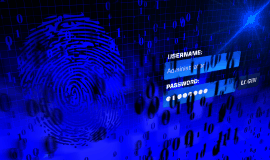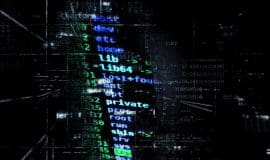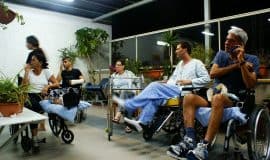Portfolio
Filter by Category
Filter by Date
Search
I have been a professional freelance writer for more than 20 years and have written for a variety of publications and companies including Better Homes and Gardens, GE, Intel and The Washington Post. If you’re looking for high quality, professional writing tailored to you and your style, I deliver outstanding results.






Guard the Last 4 Digits of Your Social Security Number

Rating Fraud: Not All Security Breaches are Equal


Changing Regulatory Model Could Offer Big Benefits
EXCLUSIVE Revamping the current US utility regulatory model to create a network of distribution system operators (DSOs) to control the grid would open the market for solar PV, energy storage, energy efficiency programs, EVs and DR, Michael Rutkowski, managing director within Navigant’s energy practice in the firm’s Chicago office, told us recently in an exclusive interview.
“Having the grid be essentially ‘plug and play’ for all these types of distributed energy resources would enable consumers to also be ‘prosumers’ – producers of energy,” he said. “Such a system would provide equal access to the grid, essentially serving as a gatekeeper to allow those new types of services to become more available. It would offer flexibility and more choices for consumers,” Rutkowski said.
But such a change also would pose challenges for pricing, cost recovery and reliability, he added. He emphasized that both he and his consulting firm remain neutral on the issue and weigh the pros and cons on a case-by-case basis since individual utilities could try to make the case for a DSO within their own service territories.
Former FERC chairman Jon Wellinghoff, who now represents clients in a number of emerging energy fields for Stoel Rives law firm including distributed solar PV, proposed such a model, we reported in March (SGT, March-7). Wellinghoff outlined a system on the retail side where state-regulated distribution utilities would continue to own the distribution grid but would transfer operations to independent DSOs akin to the ISO/RTOs on the transmission side.
If these DSOs wanted to be involved in another energy business, they could create a separate division, Rutkowski said. Consumers could choose among different billing and pricing structures and could better control their energy costs. Discussion of such a change is in the early stages, he added, but “there has definitely been a lot of discussion and debate on the topic.”
As pricing and financing costs for solar and other distributed energy drop and prices for energy in some regions rise, more scenarios are arising where such models might make sense, Rutkowski said. “The cost trajectories of a number of these distributed energy technologies are getting to the point that within a number of years, they’re projected to be at grid parity, at which point the economic conditions would exist for customers to capture savings over their current service,” he said.
Since energy prices vary widely from state to state, some areas will have more financial incentives to make changes. For example, residential power is 30¢/KWH in Hawaii compared with 9¢/KWH in Louisiana and Washington, according to July statistics from the US Energy Information Administration. “It’s a region-by-region story in terms of making it work,” Rutkowski said. “States with relatively high retail rates such as Hawaii and California (17¢/KWH) are at or near the tipping point where new technology produces savings for customers,” he said.
“On the other hand, in some regions we already have very low cost energy being delivered to consumers. For example, Idaho has very low electric rates (10¢/KWH for residential customers), and it could take a while before the business case can be made that DER (distributed energy resources) will provide net cost savings to consumers. But there are other benefits to distributed resources such as reliability of supply at home that some consumers might be willing to pay for.”
Proper design of the pricing structure will be important in any regulatory model, he added. “The one thing you hear about the most as it deals with net energy metering for solar PV is, ‘How do we ensure that the costs of the distributed grid are being fairly and appropriately attributed to the customers that incur those costs?’ ” Rutkowski said. “The tensions lie in the possibility that one customer class could be subsidizing another customer class. If those pricing structures are not designed appropriately, ironically, low-income customers could be subsidizing higher income consumers. “It gets very complex. That’s where the devil’s in the details – in the rate design.”
Under the current market design, this issue already came up in Australia, Hawaii, Nevada (SGT, Aug-3) and elsewhere as utilities and PUCs worked on how to fairly price the energy PV customers sell back to the grid (SGT, March-6). System reliability is another concern under a DSO model, he added. “If the market transition isn’t set up right, there could be a risk where electric grid reliability is hurt. “If the utility is in a position where it is not recovering its costs, then it may not be able to make investments to maintain reliability and maintain the system. Without that backbone of reliability, you could have longer and more frequent outages.”
Grid security is another issue that should be considered and included in any plan to set up DSOs, Rutkowski said. With more participants in the market, there is more risk for security incidents, he added.
Another question for consideration is whether utilities themselves could serve as those DSOs or whether the DSOs should be independent. On the pro-utility side, “some utilities would say, ‘We know our distribution grid and we’re in the best position to manage it. We know where investments are needed and where and how third parties can access it.’ “In performing that service [as a DSO], utilities should be able to recover costs,” Rutkowski said. But if utilities served as the DSO, the independence between owning and operating the grid would be lost, he added.
“It has to be a well-planned and well-orchestrated transition. Utilities need to be integrally involved in the process.”

Silver Spring Transfers Grid Expertise to Cities
EXCLUSIVE INTERVIEW Many start with smart streetlights, build onto network
With two-way communication, cost savings and improved reliability, smart LED street lighting systems are helping create smart cities – using technology similar to what is being used to build the smart grid, Sean Tippett, director of smart cities at Silver Spring Networks, told us last week in an exclusive interview.
Since it came on the scene in 2002, Redwood City, Calif-based Silver Spring became a leader in critical infrastructure networking – starting with utilities, he said. Silver Spring helped Pacific Gas & Electric (PG&E) network 5 million devices over 70,000 square miles, he added.
“We’ve spent a lot of time working with our utility customers, helping them securely network their assets. “In doing so, we’ve provided a large amount of value in grid reliability, improved service, better information for customers and better information for utilities,” Tippett said. “We’re starting to see a new customer set emerge over the past couple of years that can benefit from the same technology: cities.”
QUOTABLE: There are a lot of similarities between smart grid and smart city. Both have the need for secure, scalable, multi-application networks. For utilities, critical infrastructure means their smart metering or other smart equipment on the electric distribution grid. For cities, critical infrastructure means their street lighting systems, intelligent traffic systems, smart water networks, smart parking, weather and air quality sensors, EV chargers and more. – Sean Tippett, director of smart cities at Silver Spring Networks, in an exclusive interview
“The common thread is, we network large-scale outdoor devices. We’re able to take all the things we’ve learned from employing smart grid with our utility customers and port them over to cities,” he added.
For cities, streetlights are the first step in becoming smarter, Tippett said. There’s a strong business case for making the move: Over the past two or three years, LEDs have become longer lasting, more energy efficient and less expensive, he noted. “It’s the merging of two technologies,” Tippett said. “LED technology has really started to come down in price. We’re also seeing the full maturation of this utility-scale networking technology for cities.”
LEDs alone yield significant savings, but smart networking yields even more savings, he added. A city switching from legacy high-pressure sodium lights to LED and controls can get its investment back in six to eight years, depending on its costs, a Silver Spring case study found.
Adding two-way communication/networking helps cities save even more because they get to know immediately when a light is out or shining during the day – and so they can avoid sending out patrols to look for malfunctioning lights or waiting for citizens to report problems. Networked LED lights can eliminate up to 90% of truck rolls and cut repair and maintenance costs through more accurate crew dispatching, the case study found.
As Silver Spring began to work with cities, especially small ones such as Fitchburg and Randolph in Massachusetts, it realized some cities looking for a smart city network were not looking to expand their IT departments to support the new technology, Tippett said.
“Utilities typically have robust IT departments, used to owning their equipment and hosting it in their data center. “With some cities, you can see that they don’t have the ability, budget or the desire to build out IT to support the network. That understanding drove us to offer networking as a service,” with all the in-field networking infrastructure and back-office data services to support streetlight networks and other networked applications, he added. A city has only to manage the application by logging in with secure credentials to a mapped system to see if there are any malfunctioning lights.
Florida Power & Light (FPL) is working with Silver Spring on “the largest networked street lights project in the world – more than 500,000 lights,” FPL CEO Eric Silagy said today in prepared remarks. “Establishing a smart street light network will continue the advancement of our smart grid and deliver benefits to our customers, including more reliable and efficient service.”
Silver Spring quoted Silagy as it told the press about an upgrade to its street light and smart city control and management platform, now called “Streetlight Vision 6.” The software has over 100 new features, the firm said, adding that over 500 cities use Silver Spring’s street light-control software.
In addition to the towns in Massachusetts, Silver Spring is working with Bristol, England; Chicago; Copenhagen; Glasgow, and Paris on their smart cities programs, Tippett told us last week.
Streetlights earn savings
The benefits of networked streetlights extend beyond troubleshooting repairs, according to the case study to which Tippett pointed us. Cities with networked streetlights can easily dim the lights and alter the timing to save money. At a smart cities conference in Washington, DC, last month, Tippett discussed case studies from Bristol, Chicago, Copenhagen, Miami and Paris.
After networked streetlights, cities can add more applications such as networked, intelligent traffic systems and environmental sensors to measure CO2 and noise, he said at the event. Copenhagen was one of the first cities to adopt smart street light technology and added more applications over the years, Tippett said.
“They’ve been very proactive about trying to gather all the stakeholders and try to find different ways they could use the system,” he told us.
Boost safety for cyclists
In Copenhagen, where 40% of all trips taken are by bicycle, traffic sensors can work with networked lighting so streetlights brighten when a bike approaches an intersection, Tippett said.
“The bicyclist is able to transition through the intersection in a much safer manner than before.” “That’s especially important in Copenhagen, where bike traffic is expected to grow to 60% of all trips in four years,” he added.
Implementing smart city communication infrastructure may seem daunting, but city leaders who are considering it “can establish a multi-application smart city network through a lighting system. You can do it within budget and you can do it with your existing IT department. Any city can be a smart city,” Tippett assured.
Ecamion shows off smaller, stronger grid batteries

GE Digital Energy Field Tests Mobile Damage App
EXCLUSIVE INTERVIEW
Makes predictions based on partial outage data
Helps manage, maximize benefit from foreign crews
GE Digital Energy’s new mobile damage-assessment app could shave one to two days from a two-week, major storm-related outage – saving utilities millions of dollars, John Chisum, utility product line leader for GE Digital Energy, told us recently in an exclusive interview.
The app was released in February, according to the GE website, and this interview was our first inquiry into what it offers utilities that use it.
“Using this application, a utility can start inspecting things in the field a day earlier after a major storm or other event than they could using traditional logistic systems,” Chisum said. “Putting people in the field a day earlier can cut days off recovery time and save multi-millions of dollars.”
For a major hurricane, a full restore might take 14 days without using the app, he added. “If we can restore them in 12 days, we can save the utility millions in revenue stream and the cost of foreign crews.”
“Workers can be out in the field as soon as it is safe,” Chisum said. “This could be within hours of the storm passing, based on safety conditions. A utility could have repair crews staged in a safe location with the app downloaded so as soon as conditions are safe, they could be sent into the field immediately,” he added.
This app offers a simple user interface, a GPS feature and works on any popular mobile device – not just those owned by the utility, Chisum said. During major storm recoveries, mutual-assistance crew members from other utilities can download the app onto their own devices, he added.
As crews check for damage and enter new information, the GPS can identify their location.
Although the app will work with legacy meters, smart meters enhance the performance of the app by offering more real-time data, thus restoring power faster, Chisum said.
The cost to the utility is expected to cost about $1 million for a utility with a million smart meters, Chisum said, though the firm believes he savings from a single major outage could offset the investment. The firm considered a shared-risk model of pricing, where the utility would pay based on how much money the app saved after a storm.
“If you were able to pull one to three days off that event, what would that be worth to you?” he said. “They might save tens of millions of dollars.
“That risk-sharing model could be much more profitable to GE,” but utilities might not have been happy with the bill, Brian Friehauf, GE Digital Energy asset management product line leader, told us. “That’s the tricky part. That’s why we went with a more traditional pricing model.”
Two utilities are field-testing the app to let GE further refine it, Friehauf said. Five utilities expressed interest, but the technology firm limited the rollout and the two do not want to be named at this stage, he added.
GE expects to offer the app more widely by the end of this year, he added.
Many utilities still use manual, paper-based processes, requiring data-entry at the home office to evaluate damage after an outage, Chisum noted.
“Probably 75% of utilities are still gathering data manually to some extent, even if they have a mobile solution for their own staff, because they don’t have devices to give to outside contractors,” he added. “If you’re doing it on paper in the field, a lot of the information has to be re-entered in the office.
“Anybody coming into the area to assist can use the device they brought with them,” he added.
With other apps, when the mutual-assistance people show up, the utility need needs to give them a laptop and credentials and teach them how to use the app. That this is not always a smooth process as some foreign crews are resistant to using another utility’s system.
GE has an older mobile app but use of it has been limited to a utility’s own employees, Friehauf said.
“Crews could download information onto their specific devices, but we couldn’t leverage the devices to mutual-assistance crews.
“It was a tool useful to utilities but it stayed within the utility’s boundaries. This [new app] allows us to perform a much better damage triage assessment.”
Damage prediction included
Information available on that older app is more limited, Friehauf said.
“If you’re doing damage assessment on a company’s existing mobile solution, the information doesn’t come back in a form that lets a utility say, ‘Based on the data we have, there are 50,000 poles we need to replace,’” because older systems typically do not have the ability to predict totals based on a partial collection of data.
Smart meters can help give utilities a more detailed damage assessment, and as a utility installs more smart meters, the overall system will become more adept at providing data, Friehauf said.
During an outage, utilities get good information already from smart meters but it is incomplete, Chisum noted.
Acting on AMI info
“If I have a great smart metering infrastructure out there, I would get the signaling or lack of signaling to know who is out of power. That helps with the outage-restoration process, but there are still some details missing for restoration of the network.
“The automated system can tell me that everyone on the street is out of power, but it can’t tell me about the infrastructure requirements. It can’t tell me if five or three poles are down.”
In an initial damage assessment with the new app, a storm team can walk 10% of the affected area and the app will let them accurately predict total damage, Chisum said. The utility can then order the right number of foreign crews and provide statements to the media about how long it will take to restore power, he added.
It is still the case that “in some cases, mutual-assistance crews are brought in and the utility doesn’t know yet where to put them to work,” he said, “or first responders show up and may not have all the skills and materials to make the repairs.”
Possible scenarios include a bridge needed for access being so small only one type of truck can cross it. “Very often, a large bucket truck that can’t cross that bridge will get sent and then another truck has to be sent. With the app, they will have this information.”
Efficiency for minor outages
Utilities can benefit from using the app in a minor outage not related to a storm, Chisum said. It helps them determine the experience a crew would need to correct it and, again, lets the main office know of any size restrictions on access roads and bridges.
One of the utilities field testing the app had calm-weather days in mind when requesting the app, he added. The utility wanted its workers to get accustomed to using it before a big emergency, he added.
Most of the requested refinements from the early adopters were minor, such as changes to the graphics interface and better usability, Chisum said. The app works now on mobile devices using Apple and Windows operating systems, he added, and Friehauf said that by fall, an Android version will be added.
Other officials can help
A utility could provide the app to police and firefighters to let them share information with the utility, Chisum said. If such government employees saw a utility pole down or other issue, they could let the utility know via the app.
Such information sharing would be one-way only, he added, noting the police and firefighters would not have access to the big-picture data.


Estate Planning For $1 Million +
Estate planning is essential for everyone, no matter how simple or small the estate. But once your estate edges close to $1 million, the complexities increase. Unless your estate is valued at more than $5.43 million—or $10.86 million for a married couple—you’re exempt from federal estate taxes.
But some states impose estate and/or inheritance taxes at a lower threshold, with most around $1 million to $2 million, although the cutoff is only $675,000 in New Jersey. A comprehensive estate plan can help to maximize what your heirs receive and ensure that your wishes are followed.
Understanding Wills Vs. Trusts
Most people start their estate plan with a will, said Bill Ringham, senior manager of Wealth Strategies at RBC Wealth Management. That’s because wills are relatively easy and inexpensive to create. But for more complicated estates—as those that exceed $1 million often are—a will may not be the only solution to consider.
Wills are a matter of public record, which means anyone can find out the value of your estate and who your beneficiaries are, Ringham said. “A very public figure such as a politician, entertainer or professional athlete might not want people to know what they’re leaving in their estate,” he said. “Or, someone might not want people to know exactly how much is being directed to their children and how much is being directed to charity.“
For a more private resolution after death, many people with larger estates choose to put their assets in revocable trusts, also called living trusts. You transfer assets into the trust and those assets are managed by a trustee—often that trustee is you—for your benefit while you’re still alive.
As the name implies, the trust can be modified during your lifetime. When you pass away, the trust can specify that assets be distributed to your beneficiaries, or a successor trustee can be named to manage and control the trust for your heirs.
A revocable trust can include real estate, cash and non-retirement/non-qualified investments accounts, non-qualified annuities, and tangible personal property such as cars. Retirement accounts such as 401(k)s and -deferred IRAs cannot be placed in a revocable trust. There is no minimum amount for establishing a revocable trust, but such trusts become more attractive as an estate becomes more complex and exceeds $1 million, Ringham said.
“With a trust, no one can see where you’ve left your money,” Ringham said.
Family Estate Planning
Trusts often take less time to settle than wills, since wills must also go through probate. Administering an estate with most assets in a revocable trust could take six to nine months, Ringham said. Probating a will, especially in several states, could add three months to the typical timeline for a trust, he said.
Cost varies by state. “Many of our clients, especially northerners, have homes in more than one state—a primary home in New York, a home in Florida, another home in California,” said Barry Zischang, an RBC Wealth Management consultant. “Going through probate in three states will be expensive and a lot more work. By having individual homes titled in a trust, you can avoid that.”
Setting up the initial trust document isn’t necessarily more difficult than setting up a will, but trusts do require some additional work, Ringham said. After you set up the trust, you have to change the title in all applicable assets from your name to the name of the trust. If you don’t, the title of the accounts takes precedence over your will or the trust and it may take longer for funds to be released to your heirs.
Give While You’re Alive
While planning for the distribution of your assets after you pass, you can also start giving them away during your lifetime. Since the rules vary by state and each family situation is different, it’s important to consult an experienced financial advisor regarding tax implications that may apply You can give $14,000 per year ($28,000 per year for married couples) to a child, grandchild or anyone else you choose without it counting as a gift under the federal gift-tax exclusion. That’s especially appealing if your estate has grown past the level of being exempt from state or federal taxes.
“[For] every dollar that you move out of your estate, your heirs save [approximately] 40 cents in taxes,” Ringham said. If you give more than that $14,000, it counts as a taxable gift and taxes are imposed not on the recipient, but on you as the giver, Zischang said. You don’t have to pay those taxes, but you do have to file a gift tax return and the gift counts against your individual estate exemption of $5.43 million, he added.
However, there are two unique instances where you can exceed that $14,000 individual annual limit with no tax consequences. “You may pay somebody’s tuition at an educational institution in unlimited amounts and that is not considered a gift,” Zischang said. But the payment must be for tuition only—not for books or room and board. And you must pay the money directly to the educational institution—not to the child, grandchild, other recipient or their parents. The other exception is paying medical bills. “If your child or grandchild goes to the hospital and gets a bill for $100,000 they can’t pay, you can pay the hospital or other provider directly and that is not considered a gift either,” Zischang said. You could even help pay for health insurance as long as you write the check directly to the insurance provider, he added.
Irrevocable Trusts
As your assets grow beyond the $5.43 million federal estate tax threshold, you may want to set up an irrevocable trust. Assets placed into an irrevocable trust are removed from your estate, which can make it an especially attractive option for any assets you expect to increase in value, such as stocks and real estate, Ringham said. The assets you put into an irrevocable trust still count against the $5.43 million gift exclusion, but any growth or appreciation occurs outside your estate.
There are some downsides: An irrevocable trust can’t be terminated or modified except under special circumstances. Ringham also pointed out that you will have to draft and file separate tax returns for the irrevocable trust. A well-thought-out estate plan is crucial to ensuring that your wishes will be followed after you’re gone. With the right tools and the help of an experienced estate planner, even a large estate can be handed down to your heirs in exactly the way you intend.

Outpatient Joint Replacement at White Fence Surgical Suites
